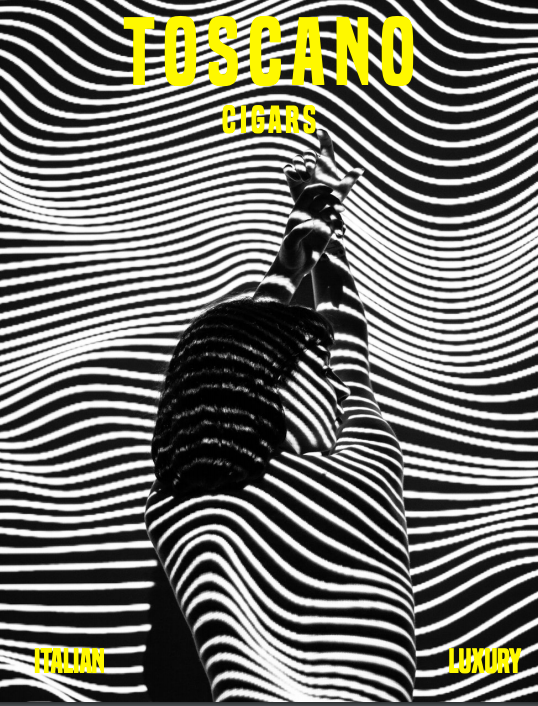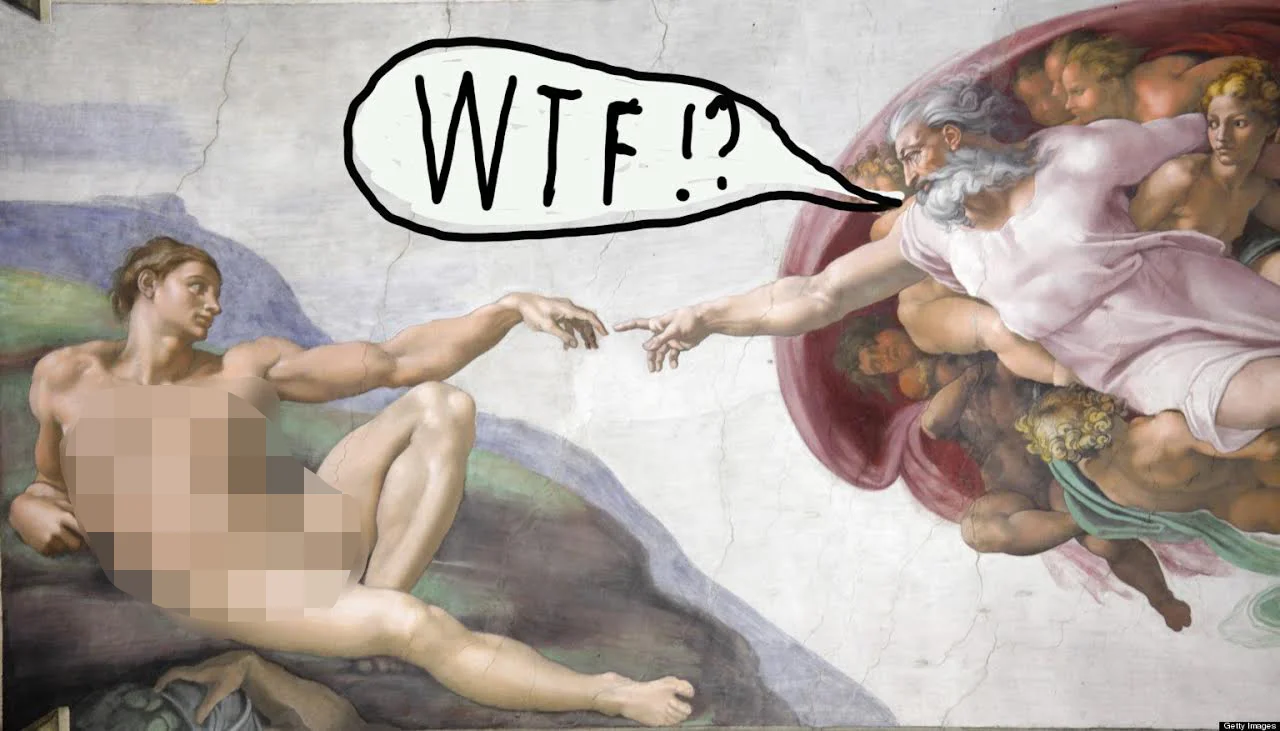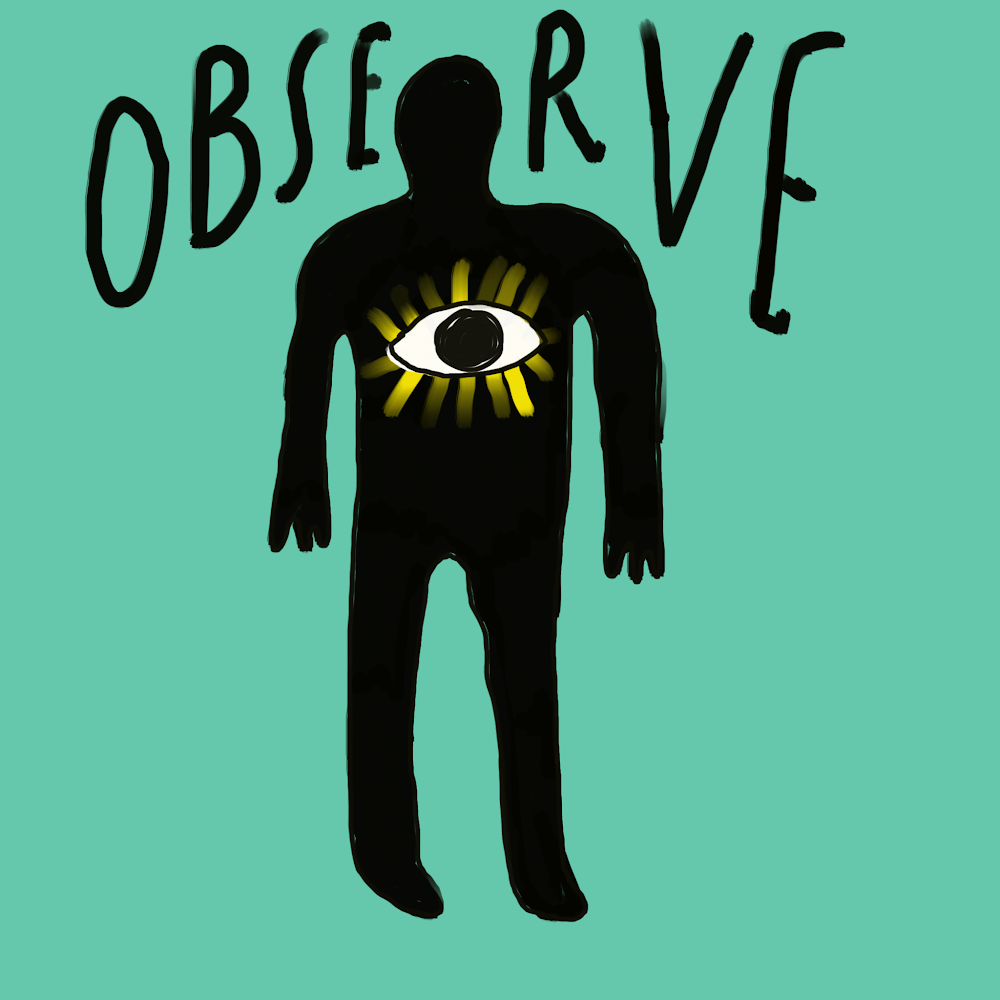This is the raw zoom video from class, the first 50 minutes are us trying to problem solve file sharing issues and getting everyone set up on our Slack Channel… for the meat of the class, scrub to 52 minutes.
In this class we discuss the ideas of Literal Depiction vs. Literal translation. Taking inventory of the building blocks of concept: cliches, context, and contrast.
Then we do a deep dive into project thumbnails. Discuss the difficulties and creative blocks when trying to concept and how to alleviate them.
Brief Lecture on Concept and Execution
Design For Print #2: Intro To Concept
Design for Print #1: Into to Print
4 things that will change the way you think about Branding & Visual Communication.
I’ve been spending my summer teaching class at Nossi College of Art. I moved back to Nashville from New York City with the romantic vision of being the teacher I needed way back when. First off, I love teaching, it feels good, and I have access to more parts of me when I’m doing it. But even more motivating to me is the opportunity to open up my students, see the “lights” come on, and work with them on fun and cool new things.
I’m attaching the latest work that is coming out of my Design Media Class. This assignment was to rebrand a cigar company. One group chose a cigar (Toscano) the other to rebrand JUUL, the E-cig company. I didn’t care what they did so long as the strategy was sound. And honestly, we had to rework strategy too.
Here are a few lesson’s that came up during this assignment. Every class I teach is critique based. This means that we spend most of our time critiquing the progress the students are making on their projects. I have found by doing this I don’t have to prepare a lecture to fill class time, instead, I wait to see what is coming up in the critique and lecturing from that. All the right things come up. Here are four things that came up during this assignment… 4 things that will change the way you think about Branding and Visual Communication.
1. What if we approached Branding and Visual Communication as a relationship rather than “selling” or trying to look good?
I believe this visual communication game is a relationship between me, the designer, and my audience. And all relationships, whether romantic, friendship, or designer/audience have certain needs for connection to happen. The biggest need is true intimacy. In a romantic relationship or friendship it is very important that I express my true self so that the people I am dealing with know the real version of me. The flip side of this is that I need to show my true self to people so that I can gain relationships with people who actually like the person I like being, who I am naturally.
Anything else in unsustainable. And honestly, anything else is manipulation. If I pursue relationships by trying to tell a friendship or romantic interest how great I am: trying to impress them with career accolades, how much money I make, and generally what’s great about me, that’s trying to sell them on an image I want them to see. That’s me trying to control my image and their perception of me. In psychology that’s called codependency and its the opposite of true intimacy. Codependency is the best way to build toxic relationships that end up bitter, cold, and in my experience, end in a massive explosion.
2. True Empathy and how we get it wrong
This is the first step in the Design Thinking process and I believe it’s where most of us get it wrong. We have a hard time distinguishing between Empathy and Sympathy. I believe this comes from an improper relationship with the self. We say to ourselves “who am I to know what people want” or “I know exactly what people need and should do”, and therein lies the issue. It’s putting the mind game in a third party, I either know or don’t know what other people should do, should want, or need. Again, this leads us to codependent thinking. I label this third party thinking as Sympathy, looking from the outside.
Empathy is a little different. Like when Jesus said to “Love your neighbor as yourself”. This means before you can love someone else you must love and accept yourself first, then you are qualified to put yourself in the position of someone else and love them the way you need to be loved. But here is the trick, this is where Sympathy and Empathy are different and it is so subtle yet extremely important. With empathy we put ourself in someone else’s position, mentally of course, and ask “what would I want/need in this situation?”, versus asking “what do they want/need?”—that’s sympathy. They key is to stay centered in ourselves and use our own intuition, feelings, and thoughts to meet our own needs in that given situation, because when we meet our own needs we will meet the needs of others because in reality our own needs are those we share with everyone else.
Here’s an example to illustrate:
“If I would have asked the people what they wanted, they would have said faster horses”-Henry Ford
Empathetic thinking yields the Model T, Sympathetic thinking yields Faster Horses.
Empathy allows us to connect with people on a deeper level, because again we are offering ourselves to others in a new and meaningful way, rather than just sympathetically giving someone else something we think they might want and approve of.
3. Freedom and courage to express what we really think and feel, show who we really are.
Having the courage to act in a way that is true to ourselves is where the real challenge exists. In the classroom, I have to get students out of the mindset of trying to anticipate what I want as their teacher. In a professional setting, I have to lead creatives out of the mindset of trying to anticipate “what the client wants”, “what the creative director wants”, or “what the target market wants” and get them centered in what they want, or what they think would be cool. That’s where the good stuff comes from.
Approaching this visual communication work the way I propose requires my students to offer up themselves—honestly and intimately. And it’s scary because it’s vulnerable to honestly express what we want, need, and what we find interesting. Again it is easier to hide behind what we think is expected. It seems more comfortable to offer up behaviors and ideas we “know” will be approved of by others.
Our fear of rejection wants to control and manipulate situations to keep us “safe”. However, longterm, “going along to get along”, offering behaviors and ideas that we think will be approved of is running counter to who we actually are. And this type of mindset leaves us unfulfilled—mired in self betrayal—until one day we just can’t take it anymore. This way of working leads us to unsustainable relationships.
It’s why clients leave agencies, creatives leave jobs, and cultures go sour.
The alternative, be who you are and connect—in work, in relationships, in friendships, and with your audience.
In branding it works like this, you can either project an image you think people will like or you can project who you really are and attract the people who actually like you for who you are. The former is pander that serves no-one, the later is true intimacy and real connection.
4. We’ll never really know what “they” want, actually there is no “us” and there is no “them”.
The truth is we’ll never know what’s going on in someone else’s head. I have a hard enough time figuring out what’s going on in mine. I have to meditate, journal, and reflect daily to keep a handle on it.
In physics there is what’s called the observer effect which is the theory that the mere observation of a phenomenon inevitably changes that phenomenon. I believe this to be true, people behave differently when they think someone is watching them. When we ask for input in a formal setting like a meeting, or focus group, people will be altered by the setting. They know what they say will be analyzed, judged, and assigned value. Therefore, their behavior will be based on what they think will sound smart, be valuable, and ultimately be approved of. It’s that simple, the closer we look at things the more we alter them.
What’s better? I believe to look within ourselves. Yes, by observing what’s happening inside of us we do alter things, but for the better. We actually begin to know our true feelings, thoughts, needs, and wants. And we can figure out which of those things are coming from a place of hurt, trying to fit in, manipulation, or our true self—what makes us happy, gives us joy, and leaves us felling a sense of peace.
Ultimately, we all need and want the same things. At a deep level, we all want to feel like we know and are known by others, are loved, that we belong, and we all want a sense of peace in our lives. That is the power of connection, that we all are one at a very base level. We all want and need the same things. So when we can approach this visual communication work with empowered sense of self acceptance and love we have the potential to connect with the widest of audiences in a fulfilling and sustainable way.
Credits: Creative Direction, Art Direction, and Instruction by Chrisolux. Graphic Design and Blood, Sweat, and Tears: (JUUL Branding) Xavier Carpio, Sky Leeson, Ally Swygart @moongoddessxiv, Tyler Wilson @gtdubsdesign. (Toscano Branding) Breanne Antone, Stephanie Young, Patricia Johnson.
Lesson 1: Spiritual Principles of Connection—Connect with yourself
I always start talking about Conceptology by asking everyone in the room to “raise your hand if you’re not a human being”. No one ever does, outside of the occasional smart ass. The fact is we are all human, and even though we are all unique our needs are primarily the same, the most primary and most important need of all is our need for connection. To be known by and to know others.
As humans we are relational. We relate. Our favorite bands, brands, cars, jeans, etc. are that way because we develop a relationship with them—what they mean to us, how we feel about them. What parts of their design: emotive qualities and concepts identify with our own realities? That is connection. Humans need connection. Humans crave it.
I’m not saying all of this to imply that we use this information to manipulate people and audiences into liking us. I think we’ve all tried that to some extent. The results are never sustainable because manipulation is unhealthy, toxic, and ends up causing pain to not only those around us but to our inner most self. Manipulation is inauthentic, and a betrayal of one’s self because instead of being an expression of our true self we offer up behaviors, ideas, design work that we think others will approve of. And how do we really know what people will want, when we ourselves are unsure of what it is we want?
Henry Ford (inventor of the Model T) said “If I would have asked the people what they wanted, they would have said ‘faster horses’”.
Manipulation is a game we play without even realizing we are doing it. When our self worth is tied into what we believe people think of us we change what we think, how we act, and the work we make based on we believe people want or will approve of. This is a loosing battle.
Imagine you are in a relationship with a significant other and your whole value system is directly tied to what you believe they think of you. You change for them, you offer only the behaviors that you think they will like, over time you’ll forget who you actually are. You’ll feel lost, you’ll feel unworthy, and you’ll feel desperately alone. Because your not actually connecting, you are pandering. It works the same way with creativity. Relationships are all the same in that they rely on connection.
What I have described to you thus far is the very definition of codependent relationships. Basically it can be simplified into Pia Melody’s description: codependence is when you change your reality so that others feel comfortable or you try to change other’s reality so that you feel comfortable. Its a recipe for crazy making, depression, and abusive relationships. So what’s better?
True intimacy. Again Melody describes this as well: when I can share my reality with you and you can share your reality with me and neither of us judge or try to change it. Intimacy in our lives and in our work is truly healing because its how we connect. And through connection we find acceptance, love, and peace. We need it. The world needs it.
The thing about true intimacy is that it starts with our self. To have a good relationship with anyone we must do two things:
Listen to the person
Respect what the think and how they feel
How often are we actually doing that with ourselves? When was the last time you stopped to examine how you felt? Not what you were expected to feel, but honestly (and even if you thought it was wrong), when was the last time you acknowledged your true feelings and thoughts? This is the core of Conceptology. An intimate relationship with the self. All potent work comes from this place.
The first lesson I always teach comes from the Bible, just hear me out.
In the Garden of Eden, what was Adam and Eve’s major screw up? Was it disobedience? That’s what most churches would tell you. I believe it was something more toxic, more diabolical than the mere elementary idea of disobedience. If I had a toddler and I told him “do not touch this hot stove” and he does anyway, if we followed this disobedience idea, then the toddler after getting burned would come to me and say “I’ve disobeyed you and you are punishing me with this pain!”.
It doesn’t make sense. So lets follow the story. Adam and Eve eat the fruit of the knowledge of good and evil, then what happens? Their eyes are opened, they see that they are naked and they hide. God comes looking for Adam and when we finds him, Adam says “I saw that I was naked and I hid”. God replies “who told you that you were naked?”. The idea of naked didn’t even exist until then. Man defined it by feeling incomplete.
What happened in the Garden was that Adam and Eve took the knowledge of good and evil and became extremely judgmental. But they didn’t judge each other, or God, the first place they applied this new found judgement was to themselves. And because of that, they applied the shame of inadequacy, not enough, unworthiness, etc. to themselves and they hid, not only from God but from themselves. This is the dysfunction or sin that was introduced into the world. As a designer, if what I design behaves in a way I did not design, that is dysfunction or sin. Adam and Eve, at that point, became dysfunctional.
The Bible goes on to say that Adam begat a son in his “own likeness” and “own image” (Gen 5:3). In his own “likeness” and “image”, sure on a surface level his offspring “looked’ like him, but I believe this passage is talking about how Adam saw himself. This mental ideal that he wasn’t enough, somehow flawed, naked and ashamed was passed down. Where as God started His project by creating man “in His own image” (Gen 1:27) —whole, at peace, enough—with Adam we became corrupt because of the way we view ourselves and continue to pass this down. From generation to generation we are hiding from ourselves because of our false feelings of inadequacy.
We spend our lives thinking that how we feel and what we think aren’t as important as what others think. We feel that just our own ideas, thoughts and feelings aren’t enough, we feel naked. We feel that we need justification, approval, permission, that we must be added to, covered and protected, to feel complete. That is perfectionism. The thinking that by being “perfect” will clothe us, protect us, and hide our true “nakedness” from everyone. But the paradox is that our “nakedness”— vulnerability, honesty, and our truth—is the only thing that is important, because it connects to others.
Besides being perfect is boring. And honestly its complete fiction. There is no such thing as “perfect”. We made it up. Perfectionism happens because we choose to focus on what we aren’t rather than focusing our attention on who we are. That is basic foundation of gratitude and self love. It starts with the acknowledgement of who we are (faults and all), then being thankful for that person, which will grow into self love. And self love is kind, compassionate, accepting, patient, coming not from want or need, but from a place of wholeness and peace. And all of our creative works must come from this place, because thats where bravery, authenticity, truth, art‚—true connection—comes from.
Steps to connecting with your self:
Take daily breaks for an emotional and physical check in. How do you feel physically? How do you feel emotionally? Be honest, don’t judge your feelings, just note them
Respect and acknowledge how you feel. Write it down. Take simple steps: if you are hungry? Eat. Tired? Sleep. Emotionally burnt out? Take a bath or relax. Start small, but just start. Self care is the foundation of the relationship with self. Like all great relationships, this will take some time.












